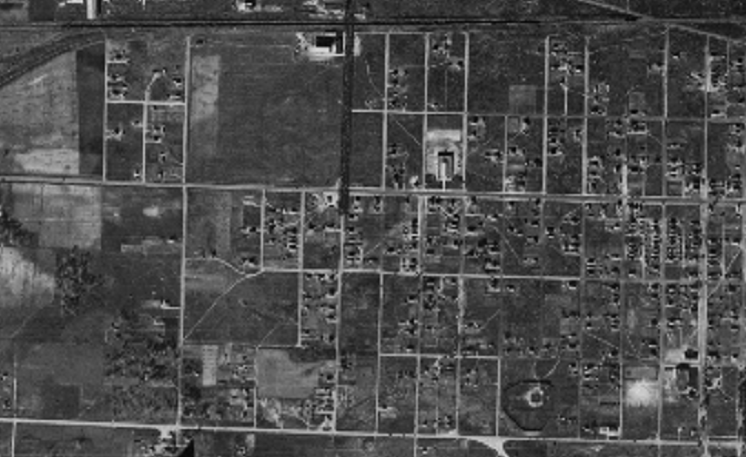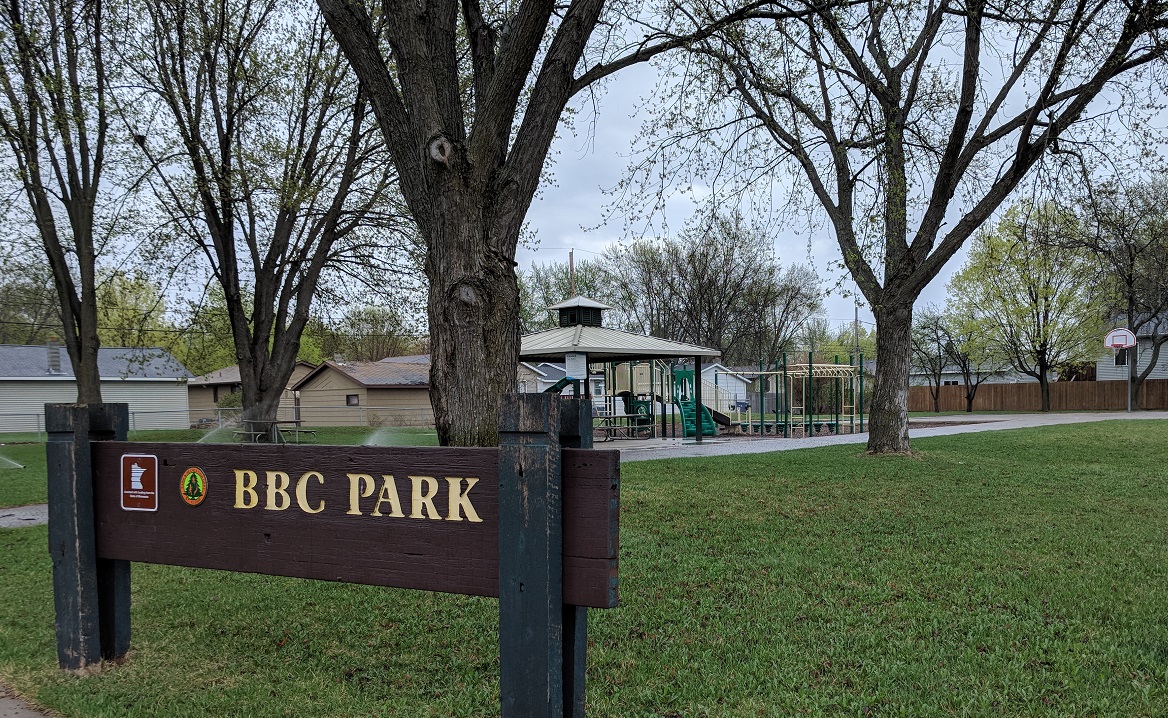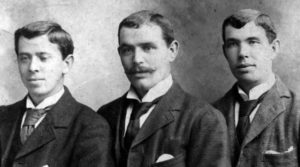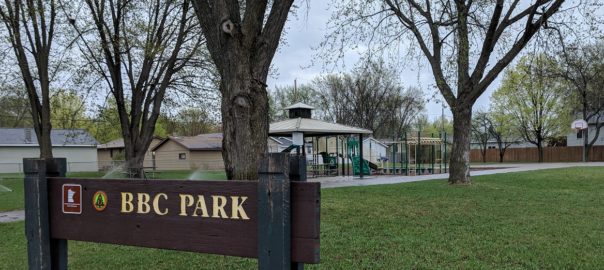St. Cloud, Minnesota, can accurately be described by either of two monikers. Choose your favorite:
- “Granite City”
- “Central Minnesota’s Geographical Midpoint of Holy Cow That’s a Ton of Lost Golf Courses”
Picked the first one, didn’t you. Hard to argue. For one thing, “Granite City” does roll off the tongue easier than the abomination that is moniker No. 2. For another, the hard-and-durable construction rock — granite — has been harvested in and around St. Cloud since the 1880s, and, after all, golf in St. Cloud has been around only since 1899.
Yes, 1899. I’ll get to it.
Within 35 miles of the St. Cloud city limits, I know of 13 lost golf courses, not including two that never really qualified as full-fledged venues for whiffing and dubbing. This number dwarfs the mere two that I wrote about in “Fore! Gone.”: the city-owned Hillside course in St. Cloud from 1930-45 and the nine-holer on the St. John’s University campus in Collegeville, circa 1926-33.
I’ll call this my St. Cloud lost-course mulligan. Allow me to cast light on a few more abandoned layouts. Just so you know, it’s going to take multiple posts. Also just so you know, by the time I’m done, I will have come up just shy of the 200 mark in identifying lost golf courses across Minnesota, so I’ll be designating with numbers as I go along.
THERE, AND NOT THERE
St. Cloud Country Club, which nestles up against the Mississippi River on the south side of the Granite City, is one of Minnesota’s classic old golf clubs. Established in 1919, it ranks among the first 35 or 40 clubs in state history. (A 2002 chronology of Minnesota golf courses ranks it among the first 26, but to be perfectly accurate, there are courses that the chronology missed.) St. Cloud CC has hosted one men’s State Amateur championship and two women’s State Ams. The course was, by all accounts that I know of, designed by the redoubtable Tom Vardon.
But it was not St. Cloud’s first golf course.
Take it from the May 10, 1899, edition of the St. Cloud Daily Times.
“NEW GOLF CLUB.” read the headline, with the story following.
“A meeting of those interested in the game of golf was held last evening in the council chambers and the St. Cloud Golf Club was duly organized with 27 charter members,” the newspaper reported. “… The membership fee was placed at $5. It is believed that a large number will become members of the new club as soon as the game is more thoroughly understood.”
To be clear: St. Cloud Golf Club (lost course No. 191), established 1899, and St. Cloud Country Club, established 1919, were, judging by every piece of information I have come across, separate organizations in separate places. There might have been coincidental carryover from GC to CC in the form of members or maybe bylaws, but they are/were not the same golf club.
Two weeks before the formal inception of St. Cloud GC, the Daily Times had offered other details.
Headline, April 24: “GOLF LINKS LAID.”
Story: “For some time the admirers of golf have been aggitating (sic) the formation of a club in this city and it is expected that such an organization will be formed this week.
“The links have been laid by Robert Foulis, of St. Paul, and he pronounces them as the equal of any in the cities, barring the fact that two railroad tracks are crossed here.
“The tee is located at the ball park, and the total length of the links are two and a fifth miles. From the tee to the first hole is 552 yards; to the second from this, 468; to the third, 250; fourth, 480; fifth, 512; sixth, 460; seventh, 296; eighth, 616; ninth, 360, making a total of 3,984 yards.
“The St. Cloud Golf club should start out with a large membership, and it undoubtedly will. O.H. Havill, Warren Freeman and H.R. Welsh are the promoters of the new club.”
Digging into the details:
— The 1899 start date makes St. Cloud Golf Club one of Minnesota’s first nine golf courses, by my count, matched or preceded only by Town & Country Club and Roadside of St. Paul; Winona Golf Club and Meadow-Brook of Winona; Bryn Mawr, Minikahda and Camden Park of Minneapolis; and Northland of Duluth. (This list updates revisions since this was first posted.)
— The mention of Robert Foulis is historically significant. Foulis is a larger-than-life figure from the first decade of Minnesota golf. He was a native Scotsman who worked for the legendary Old Tom Morris at his shop in St. Andrews, then moved to the Chicago area in 1895 and to St. Paul in 1896 as the first professional at Minnesota’s first golf course, Town & Country Club. Foulis’ talents included swing instruction, club making and course architecture. His design and redesign credits (some contributions are disputed) include Town & CC, Minikahda and the lost Bryn Mawr course in Minneapolis, Lake Forest (now Onwentsia) in the Chicago area and Bellerive in suburban St. Louis.
Foulis is correctly credited in some online and printed circles with the design of St. Cloud Golf Club, albeit without noting the distinction between GC and CC, and he is mistakenly credited in other references with the design of St. Cloud Country Club. Foulis hardly could have been involved in the Country Club design, as he had moved to the St. Louis area by 1901 and did most of his subsequent design work in Missouri.
— The length of the course is stunning. A nine-holer covering 3,984 yards, especially before the turn of the 20th century, would have been remarkably long, and a course with a longest hole of 616 yards and nothing shorter than 250 would be daunting even by today’s standards.
— As with so many lost courses, determining the course’s location can be confusing, confounding and ultimately not 100 percent confirmable. Such is the case with St. Cloud GC, though with the help of three researchers at the Stearns County Museum and a few hours of sleuthing on the side, I am more than 95 percent certain of this:
St. Cloud Golf Club was situated near the western edge of the city, near its border with Waite Park and not far north of Division Street. Best guess here and from the researchers is that the course opened near the intersection of 3rd Street North and 37th Avenue, not far from what is now BBC Park, and worked northward, eventually crossing the railroad tracks and probably onto land that is now part of the Electrolux Home Products plant.
Supporting evidence: 1) The reference to “the ball park” in the Daily Times story most likely refers to a baseball stadium in that part of town that underwent improvements in 1911 and 1925. A 1938 aerial photo of the area confirms a baseball park in that area; I have not been able to confirm whether it was St. Cloud’s primary baseball park at the time, but indications are that it was. 2) The reference to “two railroad tracks are crossed here” makes sense because of the two sets of tracks in that area (not to mention an older, out-of-service split and set of tracks just south of the in-service tracks). Also, an entry on St. Cloud Golf Club in the Harper’s Official Golf Guide of 1901 reported that the course was “one half-mile from Great Northern Railroad station, and accessible by street cars.”


More than a century after St. Cloud Golf Club’s demise, it is impossible to determine anything about its character by scanning what is now flat, urban land. But perhaps a hint can be found in a post on a Northwest Hickory Players blog. In a reprinted interview with golf historian and Foulis expert Jim Healey, Healey described his impression of a typical Foulis course (note that Robert Foulis’ brothers James and David also were course architects):
“Typical of the day, their courses featured the traditional style of that era; namely medium to small greens, teeing areas quite close to previous greens, bunkers that fell into two categories, greenside bunkers with flat bottoms and cross-bunkers featuring tall mounding facing the player and sand on the opposite side.”

I don’t know how long St. Cloud Golf Club operated, though I’m thinking 1905 is a number that makes sense. A 1901 Minneapolis Journal story notes that St. Cloud golfers would meet with those of Grand Forks, Fargo, Jamestown, Winnipeg and Duluth to organize the Northwestern Golf Association. Newspaper reports show that St. Cloud competed against Bryn Mawr in inter-club competitions in 1902. In July 1903, a Minneapolis Journal story reported that St. Cloud would be among the new clubs with competitors in the state tournament — but a story in August 1903 from the same newspaper said that St. Cloud was not a Minnesota Golf Association member. An MGA all-time membership roll from 1920 does not list St. Cloud Golf Club as ever holding membership.
A 1904-05 St. Cloud city directory lists St. Cloud Golf Club, with E.H. Hill as president and H.C. Ervin as secretary-treasurer. (Harry Ervin also was secretary-treasurer of the Tileston Milling Company.) But I could not find St. Cloud Golf Club in any newspaper mentions after 1903, and it was not mentioned in a 1910 city directory. The presumption is that the Country Club took up the torch for St. Cloud golf nine years later.
Next: One of the St. Cloud area’s lost almost-courses.
Latest posts by Joe Bissen (see all)
- Another lost routing: Hilltop, Columbia Heights - June 19, 2024
- Two lost routes: First, Antlers Park - June 17, 2024
- Tree trouble and townball: Naeseth Country Club, Wanamingo - May 6, 2024

Is Silver Springs Golf Course on your list? If not maybe you can shed some light the mystery surrounding it’s location. I used to play there and I know it was on Golf Course Road just west of Monticello Country Club. It is listed on the internet as 1854 County Road 39 NE Monticello, MN 55362; however, there are no tee times or reviews on the internet. Using MapQuest shows an outline of holes but kind of faded into the landscape. Was it relocated and then never opened?
Thanks for asking, Mr. Gerdes. Yes, Silver Springs in Monticello is a lost course. I have it as opening in 1974 and closing in 2009. I never played there so am not familiar with the property, but I believe that address is the correct address for the club, and judging by aerial photos, the golf course was generally north and east of that address.